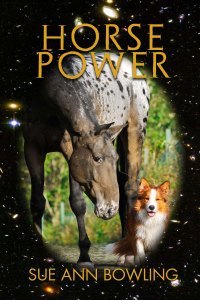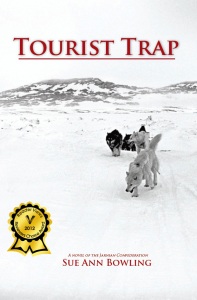
 If you are looking for the A to Z post for today (F) scroll down or click on the button to the left.
If you are looking for the A to Z post for today (F) scroll down or click on the button to the left.
Last week we reviewed the base color and dilution loci. Today we will do a final review of the interspersed white hair and white marking genes, along with the darkening genes. Although the blog series will end today, links will be put in the index to all posts in this series.
There are two main loci responsible for interspersed white hair. These are Grey (born dark with white hairs becoming more numerous with age) and Roan (born roan with white hairs constant or decreasing with age.)
The Grey locus is the syntaxin-17 (STYX17) locus on equine chromosome 25. It causes an initial increase in melanocytes followed by their depletion. There are two alleles at this locus: grey and wild-type, with gray being incompletely dominant. (Horses with two copies of the grey allele lighten faster than horses with one grey and one wild-type allele, are less likely to develop a fleabitten appearance, and are more likely to develop melanomas with age.) At this time the progression of graying (dark vs. light mane and tail) and the color of dark hair (usually black, but some individuals become rose grey, with the dark hair remaining red) are not known to be subject to genetic control. In any case the final result is a mostly white horse.
 The Roan locus is close enough to the Extension locus that there is significant linkage. It is considered part of the KIT linkage group on equine chromosome 3. There are two alleles: roan (dominant) and wild-type. At one time possession of two roan alleles was thought to be lethal, but this has now been shown not to be true. Classic roan causes interspersed white hairs on the body, but the legs, mane and tail normally remain dark. The frosty pattern, in which the mane and tail are also affected, may be a variant of roan, but the genetic mechanism is at present unknown. Scars commonly lack white hair, causing dark corn marks.
The Roan locus is close enough to the Extension locus that there is significant linkage. It is considered part of the KIT linkage group on equine chromosome 3. There are two alleles: roan (dominant) and wild-type. At one time possession of two roan alleles was thought to be lethal, but this has now been shown not to be true. Classic roan causes interspersed white hairs on the body, but the legs, mane and tail normally remain dark. The frosty pattern, in which the mane and tail are also affected, may be a variant of roan, but the genetic mechanism is at present unknown. Scars commonly lack white hair, causing dark corn marks.
Spotting loci are far more numerous, and some produce roaning as well as white areas.

Blazed face on chestnut
Minor spotting genes may be responsible for white facial and leg markings. These genes are present in most breeds, and facial and leg white tend to increase in tandem. Animals with wide blazes and no white on the legs, or with high stockings and plain faces are very often minimally marked animals with one of the other spotting genes.
 The Tobiano locus is closely associated with the KIT locus, and hence on equine chromosome 3. There are two known alleles, tobiano and wild-type, with tobiano being an incomplete dominant. Generally tobianos are crisply marked, with white crossing the topline. Legs are normally white and the face is plain or has minor markings. Minimal tobianos may have high stockings with plain faces; in the maximal pattern only the head may be colored. Roan or colored spots known as paw prints may occur in white areas on animals with two tobiano alleles. There is a dominant modifier which in the presence of both tobiano and cream produces what is called a calico pattern—the yellow of the buckskin or palomino is broken up, with some areas being red.
The Tobiano locus is closely associated with the KIT locus, and hence on equine chromosome 3. There are two known alleles, tobiano and wild-type, with tobiano being an incomplete dominant. Generally tobianos are crisply marked, with white crossing the topline. Legs are normally white and the face is plain or has minor markings. Minimal tobianos may have high stockings with plain faces; in the maximal pattern only the head may be colored. Roan or colored spots known as paw prints may occur in white areas on animals with two tobiano alleles. There is a dominant modifier which in the presence of both tobiano and cream produces what is called a calico pattern—the yellow of the buckskin or palomino is broken up, with some areas being red.
 The Frame locus is on equine chromosome 17, and is at the locus that controls endothelin receptor b (EDNRB.) The alleles are frame and wild-type. The frame allele is lethal in double dose, producing the so-called lethal white foal syndrome, so all frame horses should have one frame and one wild-type allele. The minimal expression of frame is extensive white on the head with colored legs. The maximal extent may have color confined to the topline and legs. The fact that the frame allele still seems sometimes to come out of nowhere need further clarification—a masking gene may also exist.
The Frame locus is on equine chromosome 17, and is at the locus that controls endothelin receptor b (EDNRB.) The alleles are frame and wild-type. The frame allele is lethal in double dose, producing the so-called lethal white foal syndrome, so all frame horses should have one frame and one wild-type allele. The minimal expression of frame is extensive white on the head with colored legs. The maximal extent may have color confined to the topline and legs. The fact that the frame allele still seems sometimes to come out of nowhere need further clarification—a masking gene may also exist.
 The sabino pattern is a combination of spotting and roaning, and extremely variable in expression. It may also have more than one genetic explanation. The Sabino-1 locus is part of the KIT complex (equine chromosome 3) and has two alleles, sabino and wild-type. The sabino allele is incompletely dominant over wild-type, as horses with two sabino alleles generally have more white (even to being almost completely white) than horses with one sabino and one wild-type allele. There are other mutations near the KIT locus that cause white spotting, some of which appear to be lethal in double dose.
The sabino pattern is a combination of spotting and roaning, and extremely variable in expression. It may also have more than one genetic explanation. The Sabino-1 locus is part of the KIT complex (equine chromosome 3) and has two alleles, sabino and wild-type. The sabino allele is incompletely dominant over wild-type, as horses with two sabino alleles generally have more white (even to being almost completely white) than horses with one sabino and one wild-type allele. There are other mutations near the KIT locus that cause white spotting, some of which appear to be lethal in double dose.
The Splashed White locus is yet another that seems to be near the KIT locus, though not at it. The locus probably has two alleles, splashed white and wild-type, with splashed white behaving as an incomplete dominant. The minimal effect of splashed white may not be detectable, or the horse may be more extensively marked with white legs, possibly white underbody and generally white on the head, sometimes to the extent that the whole head is white. Think of a horse trotting through a puddle of white paint with its head lowered. Splashed white is also associated with deafness.
 Manchado is a relatively rare type of spotting found in several breeds in Argentina, though that may be because of the Argentine fascination with coat color. Parts of the body, often including the top of the neck (and mane) are white, often with round colored spots. The genetic basis is unknown.
Manchado is a relatively rare type of spotting found in several breeds in Argentina, though that may be because of the Argentine fascination with coat color. Parts of the body, often including the top of the neck (and mane) are white, often with round colored spots. The genetic basis is unknown.
White with pink skin and dark eyes may be a separate gene, possibly lethal in horses with two white alleles. At the moment, this is somewhat up in the air.

The Leopard locus is the Transient Receptor Potential Cation Channel, Subfamily M, Member 1(TRPM1) locus. It has two alleles, leopard and wild-type, but an enormous array of patterns. Leopard is incompletely dominant over wild-type—horses with two leopard alleles generally have fewer leopard spots than those with one leopard and one wild-type gene, and have a high incidence of night-blindness.
 Finally, darkening due to black hair in the coat may occur in at least three forms. Black hair may be scattered throughout the otherwise red parts of the coat, producing a sooty effect. Black tipping on otherwise red hairs appears to be associated with the agouti locus, and produces shaded effects where the back appears darker than the rest of the horse. Actual black striping of the coat, brindle, is rare but documented. Some types of roan, especially sabino, may produce a type of brindle with white stripes. The genetics are unclear in all of these cases.
Finally, darkening due to black hair in the coat may occur in at least three forms. Black hair may be scattered throughout the otherwise red parts of the coat, producing a sooty effect. Black tipping on otherwise red hairs appears to be associated with the agouti locus, and produces shaded effects where the back appears darker than the rest of the horse. Actual black striping of the coat, brindle, is rare but documented. Some types of roan, especially sabino, may produce a type of brindle with white stripes. The genetics are unclear in all of these cases.
































 Buy Homecoming from iUniverse
Buy Homecoming from iUniverse















